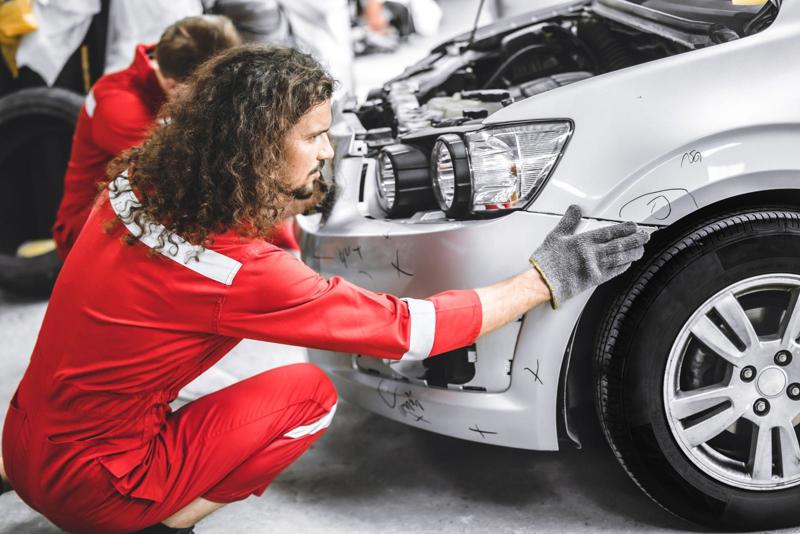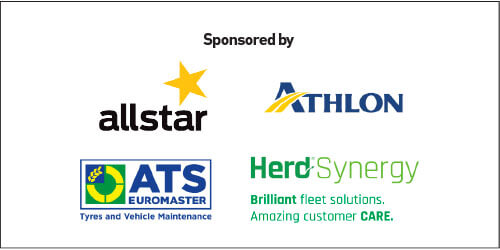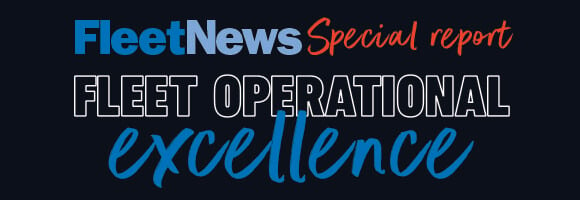This feature was taken from our special Fleet Operational Excellence report

An overlooked challenge for companies looking to transition their vehicles to electric is what happens when they are in an accident.
Processes, parts, costs and repair times all have notable differences and need to be factored into any fleet strategy and costings.
Many parts and components – as well as the battery – are drastically different to those found on petrol or diesel models.
Also, they cannot be simply towed away from the scene of a collision as a fossil fuel vehicle can be.
It is something the fleet sector will have to continue adapting to, as the transition to EVs accelerates.
Accident management provider FMG reports that the proportion of repairs it carries out on alternative fuel vehicles has increased rapidly, from around 3% of all vehicles in 2019 to 26% in 2023, and this share will continue to rise.
“EVs have changed the accident management landscape and it is important for fleet managers to understand the differences as they transition their fleet,” says Dave Parry, commercial director of FMG.
“EVs need access to specialist recovery, repair and mobility supply chains that can provide the specialist support they need.
“For example, EV recovery requires accurate triage to a recovery agent with a flatbed truck for lifting, not towing, the vehicle.
“EV repairers need safe storage areas, charging facilities, EV-qualified repair technicians and access to new parts suppliers and body materials, which, in turn, require new tooling and training techniques.
“Mobility solutions are also evolving as customers expect ‘EV for EV’ replacement, and so courtesy fleets and credit hire facilities must adapt accordingly.”
A further challenge is that EVs are more expensive to repair than their ICE equivalents.
A study by Thatcham Research found battery electric vehicle (BEV) incident claims are 25.5% more expensive due mainly to the cost of parts, particularly the battery.
If it needs to be replaced then often – if the vehicle is more than one-year-old – this cost can be higher than the residual value of the vehicle itself, increasing the likelihood it is written off.
Thatcham also found repairs take an average 14% longer to carry out due to the complexity of repairs and parts lead times and availability.
The repair cost does not tell the whole story, though.
There are other expenses a fleet will incur after a collision, such as credit hire – when a temporary replacement vehicle is provided by a credit hire organisation (CHO) in the event of a non-fault traffic collision, and the CHO funds the hire while the vehicle is being repaired.
The CHO will then claim the hire charges back from the at-fault party’s insurer. This is vastly more expensive than the at-fault party sourcing a replacement rental vehicle itself.
However, while there are undoubtedly challenges facing the accident management sector as fleets transitions to EVs, it is not all doom and gloom.
The sector has been managing BEV claims for nearly 10 years, with businesses across the industry investing heavily in the training, tooling, technology and equipment needed to provide EV repairs.
Act quickly
There are also a number of actions that fleet decision-makers can take to minimise the cost and vehicle downtime following a collision, regardless of the type of vehicle.
“We firmly believe the optimum accident management process starts with the best possible incident reporting,” says sopp +sopp managing director Callum Langan.
“Faster and more accurate FNOLs (first notifications of loss) lead to better liability decisions, improved third-party capture and reduced vehicle off-road time with right-first-time repair deployment.
“I would advise that fleets work with their accident management partner to review the incident reporting process and make it as easy as possible, for example by providing an app, clearer in-vehicle signage, or through a driver communication campaign.
“We find that clearly explaining the advantages of early reporting makes a big difference.”
If there is a collision including a third party, at minimum a fleet driver should get their name, address, phone number, vehicle registration number and insurance details. Taking photographs of the scene also provides a useful record.
Mobile technology is transforming the accident management landscape, with enhanced use of telematics data for accident reconstruction, the use of camera footage for assigning driver fault, and the use of mobile apps to enable real-time accident reporting, says Paul Hollick, managing director at Lightfoot.
“This changes the game as far as dealing with accidents is concerned – using technology as an ally ensures a faster and fairer outcome,” he adds.
“Fleets should also be looking to drill into the data provided from telematics to analyse and prevent accidents as well as investing in driver coaching to correct driver faults and making them aware of dangerous habits.”
Chris Beeby, sopp + sopp business development director, adds: “If you could get observed evidence from the scene – and that’s effectively what dashcam footage is – then you are going to be in a better position in determining liability.
“That will then help you to protect your claims cost or support the driver, support the incident and make the right decision about what’s next. There’s nothing that does that like the camera.”
Organisations should also recognise ICE repair cycle times no longer apply, says Parry, and it is important for fleet managers to evaluate repair costs in their total cost of ownership (TCO) models.
“We encourage fleets to drill down to manufacturer level for more accurate repair costs and vehicle off-road times,” he adds.
Sopp + sopp has seen most of its customers start to develop EV strategies.
As part of this, they want to accurately predict the wholelife cost of vehicles and build a deeper understanding of repair considerations, says Langan, adding: “Richer EV data is now available.”
Recycled parts
A growing trend which can help fleets with both parts availability and sustainability is to use salvaged vehicle parts in repairs.
Last year, Europcar Mobility Group UK saved 76,011kg of CO2 through recycling salvaged parts from its rental and company car fleet. It has a process where recycled parts are always first choice, with a fully committed network of BS10125-approved Tier A repairers, defleet centres and approved mechanical repair suppliers.
Parts salvaged from the Europcar UK fleet are carefully scrutinised for condition before being reused in other vehicles in the fleet.
“As well as helping us reduce our impact on the environment, utilising recycled parts is also helping us reduce vehicle downtime for repairs,” says Mark Newberry, commercial director and sustainability spokesperson at Europcar Mobility Group UK.
“Orders for parts from manufacturing have been experiencing delays for the past few years, leaving vehicles off road, sometimes waiting many months for replacements to be delivered.
“Using salvaged parts has allowed us to reduce these delays and minimise the impact on fleet availability.”
Boost efficiency, cut costs and improve compliance across all areas of your business with the Fleet News Operational Excellence report.
Delve into crucial topics for effective fleet management, including electrification, digitalisation, alternative funding, and compliance. To give you an edge, we've gathered insights from top industry experts who reveal their best practices and innovative strategies.
Dive into these highlights and read the full report to unlock the secrets of running a more efficient and effective fleet operation.






















Login to comment
Comments
No comments have been made yet.